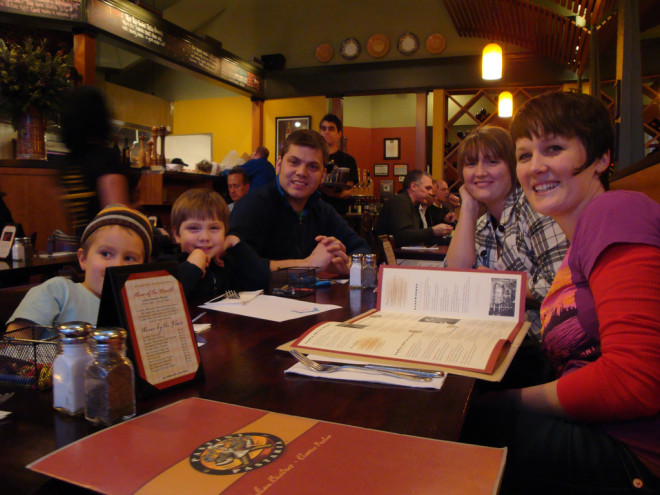Why It’s Important To Ask Customers If Anything Is Confusing

Happy, loyal customers know what to expect at your restaurant.
What do customers want? As a restaurant owner and/or manager, when was the last time you asked yourself this question?
In our busy lives today sometimes it’s easy to forget the customer. When creating employee schedules, does the customer come to mind? In training sessions are you focused on the details more than the service? Is the customer first and foremost in the minds of employees?
We’re going to discuss why it’s important to ask customers if anything is confusing. We’ll also take this question on when it comes to customer service and how it is absolutely vital to the success of your restaurant.
The only thing as important as the food at your restaurant is the service. (tweet this)
Consider a Gallup analysis that found:
The most powerful driver of engagement in fast food is “being treated as a valued customer,” followed by “the warmth of the greeting” and “the taste of the food.” Yet most diners don’t feel they’re being treated and fed well. Gallup’s analysis shows that 27% of restaurant customers are fully engaged, and 20% are actively disengaged. Among fast-food customers, though, 20% are fully engaged, and 31% are actively disengaged.
Casual diners are more likely than fast-food customers to be engaged with a restaurant brand. In this category, 26% of patrons are fully engaged, while 35% are not engaged, and 21% are actively disengaged, and they have very little emotional connection to a brand.
To simplify, a huge percentage of customers are left out in the cold. They are not being cared for in the ways they desire, and they are most likely not as comfortable as they could be.
As a restaurant owner/manager it’s your job to train your staff in customer service. Ask them to put themselves in the customer’s shoes. Wouldn’t it be nice to know more about the menu, how soon you may be seated and where the restrooms are without having to ask?
It’s the responsibility of the staff to make things easy for the customer and to ensure they’re comfortable. (tweet this)
It’s easy to forget to take care of the customer and ask them if they have questions for you because as your staff goes about their daily job routine, it becomes second nature to them. It’s easy to forget the customers don’t know the details.
Customer Engagement
What is the key driver when it comes to customer engagement?
The key to providing great customer service and engendering customer loyalty lies in a few areas:
- Customer experience
- The emotions the customer leaves with
- The feeling that the customer is valued
- A warm greeting
- Being well-fed by enjoyable servers
To many customers, these key drivers to customer engagement are more important than healthy eating choices, speedy service, cleanliness and value.

Great servers are caring, attentive and professional.
Creating a Great Customer Experience
When customers feel valued and appreciated, they’ll develop a strong positive emotional attachment to your restaurant.
They’ll spread the word via social media and word of mouth. Good food seldom makes up for bad service, but in many cases, excellent service can make up for less than satisfactory food.
Customers have some pretty basic expectations, and when these are met, customers generally leave happy. Here are a few that may seem pretty obvious, but it’s always worth reminding your hosts and servers, especially if they are high school and college age. Never assume they know these things. Train them and offer continuing training as a reminder.
- Smile: According to Dr. Oz, the smile is the window to the soul. It puts people at ease when they see someone smile. When your staff smiles genuinely at your customers, they’ll feel better and more at ease in your restaurant. Perhaps your customer walks in after a long, stressful day, the genuine smile of your staff can reduce stress, encourage trust and spread good feelings.
- Offer help: When someone walks in to your restaurant, they should be greeted immediately. If there’s a wait, have someone greet your customer at the door with a glass of water. This will make the wait to put their name in for a table seem much shorter. Ask the customers if they have any questions and freely answer them.
- Look the customer in the eye: When your server greets the guests at the table, they should use eye contact through the entire exchange. Eye contact engenders trust. This is important for your customers because they are basically at the server’s mercy when it comes to their drinks, refills and food service.
- Be professional: When a 20-something server calls her 50-something customer “honey,” it’s risky in several ways. First, if another customer hears it, and they weren’t called honey, they may feel left out. Second, an older woman will almost never appreciate being called honey by a younger woman. It’s important to maintain a consistent attitude towards all the customers without using overly personal terms such as honey.
- Ask if they have questions: It’s important to ask customers if anything is confusing. This could be in regards to the wait time, the menu, the bar or the restrooms. Asking if anything is confusing opens the door for customers and invites them to feel more comfortable asking their questions.
- Anticipate their needs: A great server anticipates the needs of their customers before they even know they have a need. For example, the diner orders steak. Bring the steak knife before or with the meal. If condiments aren’t on the table, again, bring them before the food arrives. If the customer orders finger-food, deliver extra napkins. Never let a glass get empty.
- Stay in eyesight: Teach your staff to be available to customers. They don’t have to return to the table every few minutes, but if the customer can see their server, they’ll have the unspoken knowledge that their server is there for them and they’ll be take care of promptly. This again encourages trust in your establishment.
- Don’t rush the table: Wait staff has a natural instinct to turn the table swiftly because more diners mean more tips. It’s rude to clear the table before everyone is finished eating (unless a diner asks you to). Also, servers should not interrupt a conversation to remove plates. Diners should be treated like well-treated visitors to a dinner party.
To Conclude
Hopefully we’ve answered the question regarding why it’s important to ask customers if anything is confusing by describing an atmosphere that goes beyond excellent customer service.
Walt Disney said, “Do what you do so well that they will want to see it again and bring their friends.”
Customer services goes above and beyond in the 21st century. Today’s restaurant that creates a customer-focused culture will come out on top. Restaurants that create a positive customer experience have the opportunity for free word-of-mouth marketing.
Customer satisfaction sets your restaurant apart. While there may be five first-rate restaurants with great food on the block, let yours be the one imparting not only delicious food, but impeccable, caring customer service.
Do you have any customer services tips you’d like to share? We’d love to hear how you’ve created an atmosphere of customer satisfaction at your restaurant. Please share below!


Leave a Reply